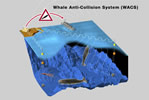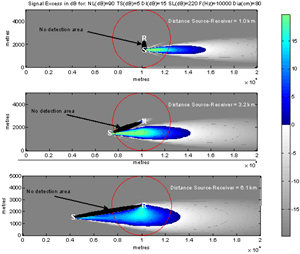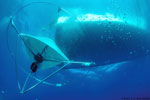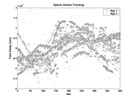



A passive sonar to detect cetaceans and prevent collisions with vessels
Being able to non-intrusively localise cetaceans in areas of dense human activities is the most suitable response to the increasing rate of collisions between fast vessels and cetaceans, which in addition to be a real threat for passengers safety, is a predominant factor of the drastic decrease of the marine mammal populations living in areas of intense traffic. The LAB responds to the urgent necessity of monitoring the movements of cetacean individuals and populations with a 3D localization passive sonar system. The - patented - Whale-Anti-Collision-System will enable the real-time 3D localisation of cetaceans entering or remaining in areas of high collision risk. After years of simulations, a prototype is taking shape and has been tested for the Sperm Whale case, by Passive Sonar and Ambient Noise Imaging.
In order to optimise the detection stage, the LAB is developing signal processing tools based on Gabor functions and wavelet bases. A wide-band source separation on a single channel has been implemented and runs real-time on a simple PC platform (Pentium 700MHz).
|
